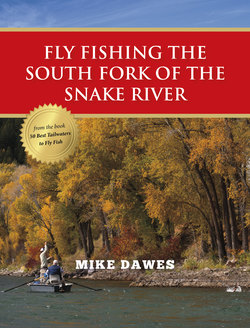Читать книгу Fly Fishing the South Fork of the Snake River - Mike Dawes - Страница 3
ОглавлениеSouth Fork Snake River (Southeast Idaho)
Location: Southeast Idaho, 45 miles east of Idaho Falls and 55 miles west of Jackson Hole, Wyoming. Most major airlines serve Idaho Falls Regional Airport and Jackson Hole Airport.
If the question: “Pick one river to fish for the rest of your life” were posed, the South Fork of the Snake would be a common answer among those who have spent time fishing it. And for good reason: The South Fork has it all: more than 4,000 fish per mile; exceptional dry-fly fishing from a drift boat; sight fishing in riffles while wading; productive streamer and nymph fishing; abundant wildlife; incredible hatches; well-organized campsites; ten well-maintained public boat launches; and more.
There is some confusion regarding the South Fork of the Snake, due solely to its name. While technically it is the Snake River, locals refer to the 60-mile stretch from Palisades Dam to the confluence with the Henry’s Fork as the “South Fork.” The Snake River originates in Yellowstone National Park, flows south in Wyoming through Grand Teton National Park into the Snake River Canyon, and empties into Palisades Reservoir. The Wyoming-Idaho line divides the reservoir, a 1,600-acre impoundment with healthy populations of brown and cutthroat trout, and Kokanee salmon. Completed in 1957, the Palisades Dam is an earth-filled structure with a discharge capacity of 48,000 cfs! It is below the dam that the “South Fork” begins.
From high mountain valleys, rugged canyons, and towering cliffs to broad floodplains, the South Fork changes dramatically and often annually along its 65-mile course. Due to its size, the river is best fished from a boat. Even for wade fishing, a boat is advantageous to access the many gravel bars, riffles, and islands.
There are multiple wade-fishing opportunities on the upper river, although it is harder work than accessing the river from a boat during optimal fishing season.
The South Fork is large and at times unruly. While there are no significant rapids, the volume of the river can be deceptive, and is something boaters and rafters must beware of. From June to September in normal years, the river flows consistently at 14,000 cfs. In September, the flows start to decrease as irrigation
demands are met, and usually by October the river is at 4,000 cfs and tapering down.
